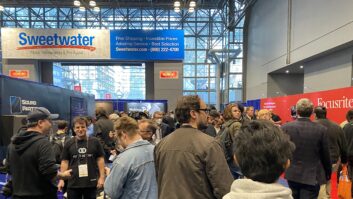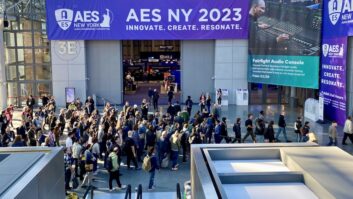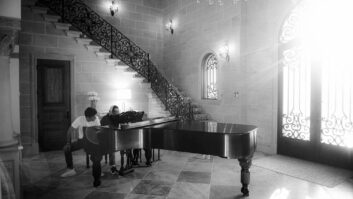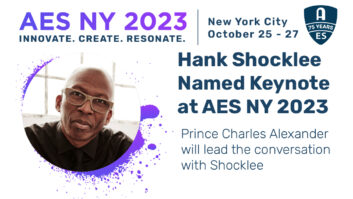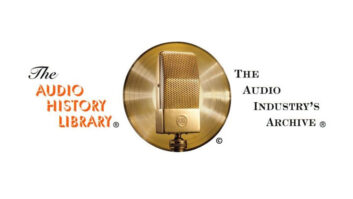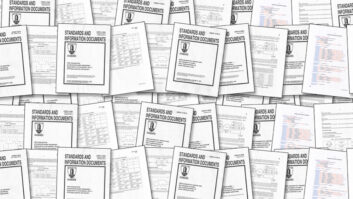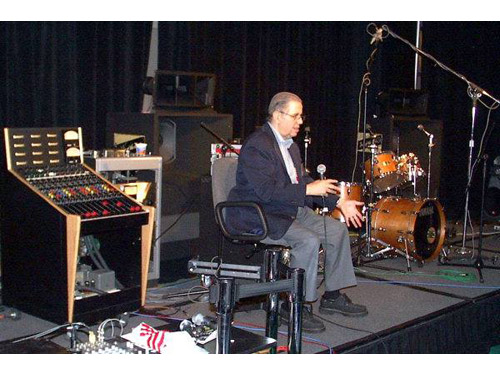
On November 28, AES Executive Director Bob Moses announced the passing of Irv Joel on Moses’ Facebook profile: “I’m sad to report that Irv Joel, one of the early pioneers of stereophonic recording at Capitol Records, and recipient of the AES Distinguished Service Medal in 2009 after a legendary audio engineering career, passed away yesterday.
“RIP Irv, and thank you for the amazing library of Oral Histories you left us, celebrating the other luminaries whose shoulders we stand on.”
The AES recognizes and honors those who have made outstanding contributions to the field of audio in engineering, technology, service, and the arts through its Awards Program.
In 2009, Irv Joel was presented with the AES Distinguished Service Medal Award in recognition of his many years of service to the New York Section; to AES Conventions, both as a committee member and contributor; to the Historical Committee and in particular the Oral History Project; and to the Standards Committee, of which he was a founding member.
Joel’s other AES Awards include the AES Award in 1963, Citation Award in 1972, Fellowship Award in 1973, Board of Governors Award in 1994 for his acting chairmanship of the 95th AES Convention in New York in October 1993, and Bronze Metal Award in 1999 for extraordinary service to the society over many decades.

From 2011, front row (seated), left to right: Ron Ajemian, Irv Joel, John Chester; back row, from left: Noah Simon, Robert Auld, Joel Spector, Al Grundy, Harry Hirsch, David Bialik, David Prentice and Jerry Bruck
Photo: Howard Sherman
An overview of Joel’s professional career is offered in AES Section Meeting Reports, dated April 12, 2011 from the New York Section, written by David Prentice, following a meeting titled “An Evening with Irv Joel—The Man Behind the Scene,” which was moderated by Ron Ajemian of Owl Fiber Optics, and featured as speakers John Chester, Robert Auld, and Albert Grundy:
“For his lifetime of contributions to the art of recording and his participation in the Audio Engineering Society, the New York Section was delighted to feature the work and words of Mr. Irving Joel in a special evening’s presentation. Mr. James Williamson, Chairman of the New York Section, welcomed the New School audience and introduced Mr. Ron Ajemian, who worked with Irv on AES Standards Committees. Ron then turned the program over to Irv who, with the help of Mr. John Chester’s support with pictures and audio clips, started at the beginning talking about his work with Capitol Records and early experiments in stereo recording. Picture a vintage VW microbus crammed with tube mics, all-tube mixer, tube tape recorder, and the batteries required to power all the above. That was the mobile recording facility put together by Irv and his colleagues in order to capture the new experience of stereo by recording the approach and passing of a train at a rail-road crossing, the sound of Times Square on New Year’s Eve, and a trip on the Staten Island Ferry. The audio examples, originally released for promotion, still sound lifelike today.
“Capitol Records in the early years released both mono and stereo records of the same session. After recording Ernest Toch’s 3rd Symphony in stereo with the Pittsburg Symphony Orchestra, Irv’s next big project was engineering in the stereo control room (mono recording was done in a separate control room) for the original Broadway cast recording of The Music Man. In an example of Irv’s attention to detail, the recording team studied the stage show and replicated Robert Preston’s movements on stage during the session by having Mr. Preston duplicate his moves during the stereo recording. And in playback, the recording still sounds wonderful. Popular music was also part of Capitol’s catalog and Irv recorded Tennessee Ernie Ford in a church in Bristol, Tenn., with vocal support by ‘kinfolk.’ The payments from the W2s represented more money than some of the singers were used to seeing in a year.
“After 15 years with Capitol, Irv moved to A&R Recording as chief engineer for the established studio on 7th Avenue and their new construction on West 48th where he took delivery, under protest, of a Neumann recording console with built-in ashtrays and cigarette lighters. The console’s performance confirmed Irv’s worst fears until his discovery of an undocumented part on the channel modules. With adjustments and modifications it eventually became a good sounding board. Irv’s recording work during this period included Judy Garland at Carnegie Hall and Liza Minelli’s Liza with a Z for television.
“The AES has benefited from Irv’s many contributions including work on Standards Committees, the Historical Committee, and his creation and support of the Oral History Project. He helped organize the very popular ‘When Vinyl Ruled’ presentation during the 2000 AES convention with leading engineers (Ed Greene, Al Schmidt, David Baker, and Bruce Swedien among others) speaking about their work during the early 1960’s, surrounded by equipment from vintage control rooms, playing tapes of their work, and answering questions. The presentation was so successful, Irv was asked to organize a sequel for the 2001 convention, which ended with a ‘direct-to-disk’ session with a live jazz band onstage, recording to a Neumann lathe operated by Al Grundy.
“The Oral History Project, audio/video recordings of interviews with over thirty significant contributors to the art and science of recording, may be Irv’s most lasting contribution, with his interviews creating a significant first-person account of the recording community.
“Additional information about the Oral History Project and ‘When Vinyl Ruled I &II’ is available at the Historical Committee Website: www.aes.org/aeshc/.
“The AES NY Section was proud and honored to host Irv and the many attendees (including the current Section chairman and four former chairs) thoroughly enjoyed the evening.
“Special thanks for video recording by Sean Carolan of the Institute of Audio Research and audio feed for video by Thomas Myers and audio mix by Bob Auld. Thanks also goes to Howard Sherman for taking the pictures.”
Visit the AES Oral History Project at www.aes.org/historical/oral.
